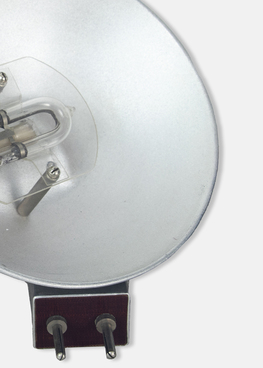A light meter is a device for measuring the amount of light reaching the photographic material. There were seven models of Leningrad light meters, which were used to determine the shutter speed and aperture when taking photos on black-and-white or color negatives. Light meters could also be used in the filming process. They worked both in bright sunlight and artificial light, outdoors or indoors.
They were produced by the Vibrator factory in Leningrad, which was established in 1929 when the Research Laboratory of Measurements joined the Elektropribor plant. Apart from designing measuring devices, the laboratory employees also taught instrumentation engineering. The first light meter model was developed in 1954 and was called Leningrad, without an index number. At that time, the factory also launched a new shop to produce consumer goods. In addition to light meters, it produced electric curlers and doorbells.
During the same period, the Moscow Factory of Light Meters produced the Moscow light meter, which was identical to the Leningrad one in terms of structural design and appearance. One of the reasons was the growing popularity that the device enjoyed among amateur photographers. Moreover, one enterprise simply would not have enough capacity to meet the high demand of that time.
The Leningrad-2 came in a stylish leather case; its base featured a reference table of film sensitivity according to three systems: GOST, ASA and DIN. Besides, it was recommended to use the light meter without taking it out of the case to protect the high-precision device from shocks and direct sunlight.
A photoelectric light meter consists of a selenium photocell, a measuring mechanism (a microampere meter) and a calculator (an indicating device). Light enters the photocell through the window of the light meter. In response to the action of light, the photocell connected to the microampere meter generates an electric current. As the illumination of the photocell intensifies, the current increases, making the pointer of the microampere meter deflect to the right.
The Leningrad-2 photoelectric light meter also measured reflected and incident light. In the first case, a photographer directed the device at the subject from their position. In the second one — from the subject to the place where the photographer was.
If the Leningrad-2 light meter broke down, it could be fixed only in Leningrad or Moscow.



